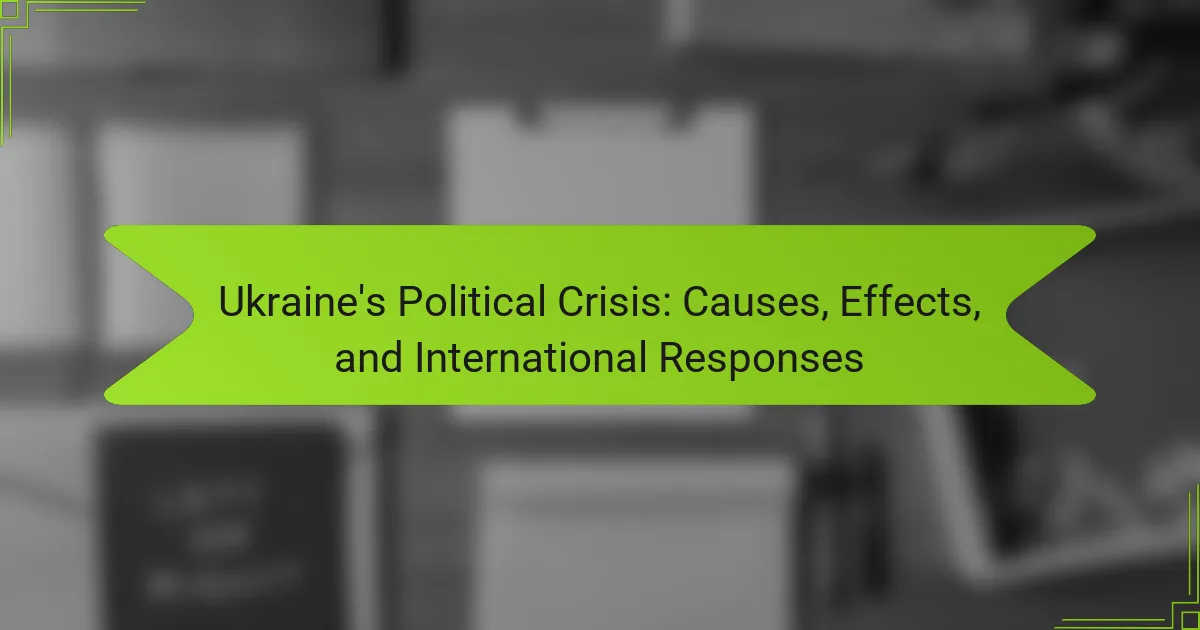Russia is a significant entity in Eurasian security, primarily through its military alliances and geopolitical influence. As a key member of the Collective Security Treaty Organization (CSTO), Russia promotes regional defense cooperation and maintains stability in Central Asia through its military presence. The country’s strategic partnerships with nations like China and Iran, along with its […]

The Dynamics of Ethnic Relations in Eurasia: Historical Context and Contemporary Issues
The article examines the dynamics of ethnic relations in Eurasia, focusing on historical legacies, economic disparities, and political governance as key influencing factors. It highlights how the dissolution of the Soviet Union has led to ethnic tensions, exacerbated by competition for limited resources and varying political systems. Contemporary issues such as ethnic conflict, nationalism, and […]

Ukraine’s Political Crisis: Causes, Effects, and International Responses
Ukraine’s political crisis is characterized by a complex interplay of corruption, historical ties to Russia, and ethnic divisions, which have led to widespread dissatisfaction and unrest. The 2014 Euromaidan protests marked a significant turning point, highlighting the deep-seated issues within governance and public trust. The ongoing conflict has resulted in severe economic decline, soaring inflation, […]

Russia’s Foreign Policy in the Caucasus: Strategies and Regional Implications
Russia’s foreign policy in the Caucasus centers on security, influence, and energy resources, with a primary focus on maintaining regional stability. The strategy involves preventing conflicts that threaten Russia’s borders and asserting dominance over former Soviet states. Key components include military presence to deter external influences, economic cooperation to strengthen ties, and leveraging energy supplies […]

Understanding China’s Influence in Central Asia: Economic Strategies and Political Alliances
China’s influence in Central Asia is characterized by significant economic investments and strategic political partnerships. Central to this influence is the Belt and Road Initiative (BRI), which has seen over $60 billion invested in infrastructure projects such as roads, railways, and energy pipelines since 2013. This economic engagement has led to a robust trade relationship, […]

The Future of the Eurasian Economic Union: Benefits, Challenges, and Member States’ Perspectives
The Eurasian Economic Union (EAEU) is a regional economic integration organization established in 2015, comprising Armenia, Belarus, Kazakhstan, Kyrgyzstan, and Russia. The EAEU aims to create a single market for goods, services, capital, and labor, enhancing trade and economic cooperation among its member states. This article examines the benefits of the EAEU, including tariff elimination […]

Political Landscape of Kazakhstan: Key Challenges and Opportunities for Reform
The political landscape of Kazakhstan is defined by its presidential republic framework, with significant executive power held by the President, currently Kassym-Jomart Tokayev. Historically, the ruling party, Nur Otan, has dominated the political scene, established by former President Nursultan Nazarbayev. Recent years have seen calls for political reforms amid challenges related to governance, political repression, […]

The Impact of Sanctions on Belarus: Economic Consequences and Political Reactions
The article examines the impact of sanctions imposed on Belarus, which include economic restrictions, travel bans, and asset freezes targeting key sectors such as finance, energy, and defense. These measures, enacted by the European Union and the United States in response to human rights violations following the contested 2020 presidential election, aim to pressure the […]

The Geopolitical Importance of the Caspian Sea: Energy Resources and Regional Conflicts
The Caspian Sea is a significant geopolitical entity due to its extensive energy resources and strategic location, bordered by Russia, Kazakhstan, Turkmenistan, Iran, and Azerbaijan. This region is rich in hydrocarbons, with estimated reserves of 48 billion barrels of oil and 292 trillion cubic feet of natural gas, leading to intense competition and conflicts over […]

Analyzing the Rise of Authoritarianism in Central Asia: Trends and Implications
This article analyzes the rise of authoritarianism in Central Asia, highlighting key characteristics such as centralized power, limited political pluralism, and suppression of dissent. It discusses the implications of these traits, including human rights abuses, restricted political freedoms, and corruption, which contribute to societal stagnation and inequality. Additionally, the article examines strategies being employed by […]
